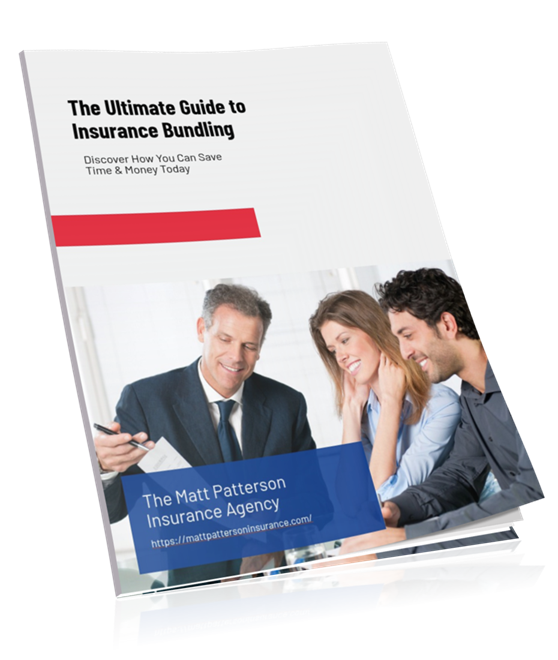Setting New Year’s resolutions for 2025 can help shape your financial future. Prioritizing Wimberley life insurance is crucial in achieving comprehensive financial planning. Understanding its importance can help you make informed decisions that protect your loved ones and assets.
Importance of Life Insurance in Financial Planning
Life insurance is a key component of financial planning in Wimberley for several reasons:
- Provides financial security for dependents
- Covers outstanding debts and expenses
- Acts as a savings tool with certain policies
You may underestimate the affordability of life insurance. The average cost for a 20-year, $500,000 term life policy is about $29/month for a healthy 30-year-old male. Many people mistakenly believe that premiums are more expensive than they are, often overestimating costs by three times.
Understanding Life Insurance
Exploring Different Types of Life Insurance Policies
When considering life insurance, understanding the different types of policies is crucial. Two primary categories exist: term life insurance and whole life insurance.
Term Life Insurance
Term life insurance provides coverage for a specific period, typically ranging from 10 to 30 years. This type of policy is known for its affordability. Here are key benefits:
- Cost-Effective: Generally, term insurance premiums are significantly lower than whole life policies.
- Simplicity: Term life policies are straightforward; they pay a death benefit if the insured passes away within the term. This clarity makes it easier for families to understand their financial safety net.
However, there is no cash value accumulation with term policies. Once the term ends, coverage ceases unless renewed or converted to another policy.
Whole and Universal Life Insurance
In contrast, whole and universal life insurance offer lifelong coverage along with cash value components. These policies come with different features:
- Cash Value Accumulation: A portion of your premium contributes to a savings component that grows tax-deferred over time. This can serve as an investment vehicle.
Long-Term Benefits:
- Whole Life Insurance: Provides guaranteed death benefits and fixed premiums throughout your life. The cash value grows at a guaranteed rate, providing financial stability.
- Universal Life Insurance: Offers flexibility in premium payments and death benefits. You can adjust your contributions based on your financial situation while still accumulating cash value.
Both options can be more expensive than term insurance but can provide peace of mind through lifelong protection and potential wealth building.
Evaluating and Selecting the Best Term Insurance Plans for Your Needs
Choosing a term life insurance policy requires careful consideration of various factors to ensure it aligns with your financial goals. Key elements to evaluate include:
- Premium Costs: Analyze your budget and the affordability of monthly or annual premiums. Compare quotes from different insurers to find competitive rates.
- Policy Tenure: Determine how long you need coverage. Options typically range from 10 to 30 years, depending on your financial obligations.
Integrating Life Insurance into Your Financial Plan for 2025 and Beyond
Integrating life insurance into your overall financial plan is essential for securing your future. Life insurance serves as a foundation for financial stability, ensuring that your loved ones are protected against unexpected events.
Setting financial goals for the new year should prioritize debt reduction and savings, making life insurance an integral part of this process.
Creating a Comprehensive Financial Plan with Investments and Retirement Considerations in Mind
Crafting a solid financial plan involves several steps:
Assess Your Current Financial Situation
Review income, expenses, assets, and liabilities. Identify gaps in your financial security, including potential needs for life insurance.
Set Clear Financial Goals:
Specify short-term and long-term objectives. Include milestones for debt repayment, emergency fund creation, and retirement savings.
Incorporate Life Insurance:
Choose an appropriate policy based on your financial obligations. Evaluate term or whole life policies that align with your goals.
Explore Investment Options:
Diversifying investment channels is crucial for maximizing returns. Consider options such as Public Provident Fund (PPF), Fixed Deposits (FDs), and Systematic Investment Plans (SIPs).
Retirement Planning:
Develop a retirement strategy that reflects your lifestyle needs. Increase contributions to retirement accounts as your salary grows to maintain your standard of living.
Wealth Builder Plans can also play a vital role in this phase. These plans offer defined milestones while providing family protection, premium flexibility, and potential tax benefits. They can enhance your overall investment strategy by combining insurance coverage with savings growth.
Maintaining a diversified portfolio not only mitigates risk but also increases the likelihood of achieving financial goals. Balancing between secure investments like FDs and more dynamic options such as SIPs can create a robust framework for future prosperity.
Making Financial Resolutions for 2025: A Practical Approach to Achieving Your Goals Through Life Insurance Planning
When setting New Year’s resolutions 2025, it’s important to think carefully about your personal financial goals. Typically, these goals revolve around two areas:
Reducing Debt
Increasing Savings
Identifying Personal Financial Goals
To turn your financial resolutions into achievable goals, you need to align them with specific actions. This will create a clear path for success. Here are some strategies to help you identify and achieve these goals:
- Assess Current Debt: Start by listing all debts, including credit cards, student loans, and mortgages. Understanding your total debt is crucial in establishing a reduction strategy.
- Set Specific Targets: Instead of vague goals like “save more,” set specific targets such as “reduce credit card debt by $2,000” or “save $5,000 for an emergency fund.”
Tips for Sticking to Your Financial Resolutions
Staying motivated can be tough at times. Here are some tactics that can help:
- Track Progress Regularly: Use budgeting apps or spreadsheets to keep an eye on your financial health.
- Adjust Goals as Necessary: Life changes can impact your ability to meet resolutions. Be flexible and revise goals accordingly.
Strategies to Effectively Reduce Debt While Building an Emergency Fund for Unexpected Events
Combining debt reduction with emergency savings is a smart way to improve your financial stability. Here’s how you can do it:
Create a Debt Repayment Plan:
- Decide whether you want to focus on paying off high-interest debts first (avalanche method) or start with smaller balances (snowball method).
- Set aside any extra money you earn towards paying off your debts.
Establish an Emergency Fund:
- Aim to save enough money to cover at least six months’ worth of expenses.
- Set up automatic transfers to a high-yield savings account so that you can consistently build this fund.
Importance of Wise Investments Beyond Savings Accounts
While saving money is important, it’s also crucial to make smart investments that can help grow your wealth over time. Here are some investment options worth considering:
- Stocks and ETFs: These investment vehicles have the potential for higher returns compared to traditional savings accounts.
- Real Estate: Investing in properties can provide both rental income and appreciation in value over time.
- Mutual Funds/SIPs: Systematic Investment Plans (SIPs) allow you to invest regularly in mutual funds, reducing the impact of market volatility.
Enhancing Your Coverage with Riders and Evaluating Insurers’ Offerings
Life insurance policies can be tailored to meet your specific needs through the addition of insurance riders. These options enhance your coverage beyond the basic terms of the policy, providing valuable protection in various situations.
Common Riders Available with Term Plans
- Accidental Death Benefit Rider: This rider provides an additional payout if the insured dies due to an accident. It’s particularly beneficial for individuals with high-risk lifestyles or occupations.
- Critical Illness Rider: This rider allows you to access a portion of your death benefit if diagnosed with a critical illness. It provides financial support during challenging times, covering medical expenses that may arise.
- Waiver of Premium Rider: In the event of disability, this rider waives future premium payments while keeping the policy active. This ensures your coverage remains intact even when you cannot work.
Factors to Consider When Evaluating Insurers and Their Products
Selecting the right insurer is as crucial as choosing the correct policy. Consider these key factors:
- Financial Stability Ratings: Research companies for their ratings. A stable insurer is essential for ensuring they can fulfill claims when needed.
- Customer Reviews: Engaging with customer feedback can provide insights into how insurers handle claims and customer service. Look for reviews that highlight both positive experiences and common complaints.
- Product Offerings: Evaluate whether the insurer provides a range of products that fit your needs over time. Flexibility in product options can help you adjust your coverage as your life circumstances change.
Understanding these elements will empower you to make informed decisions regarding your life insurance and overall financial planning as you set resolutions for the new year. The right combination of riders and a well-chosen provider can enhance your protection significantly, ensuring you secure a more stable financial future. Contact the Matt Patterson Insurance Agency today to discuss options and get Wimberley insurance quotes to find the right fit for your needs.
FAQs
What is the importance of life insurance in financial planning?
Life insurance plays a crucial role in financial planning by providing financial security for your loved ones in the event of your untimely death. It helps cover debts, funeral costs, and can also serve as a financial safety net, ensuring that your family maintains their standard of living.
What are the different types of life insurance policies?
The main types of life insurance policies include term life insurance, which offers coverage for a specific period and is typically more affordable, and whole life insurance, which provides lifelong coverage and includes a cash value component. Universal life insurance is another option that combines flexible premiums with a cash value account.
How can I evaluate and select the best term insurance plan for my needs?
To evaluate and select the best term insurance plan, consider factors such as premium costs, policy tenure, and your coverage needs. It’s important to compare offerings from top-rated insurers like State Farm, MassMutual, and Aviva to find a plan that aligns with your financial goals.
What steps should I take to create a comprehensive financial plan for 2025?
Creating a comprehensive financial plan involves setting clear financial goals such as debt reduction and savings strategies. You should also consider diversifying your investment channels through options like Public Provident Fund (PPF), Fixed Deposits (FDs), and Systematic Investment Plans (SIPs) to build wealth over time.
What strategies can help me stick to my financial resolutions for 2025?
To effectively stick to your financial resolutions, identify personal goals such as reducing debt or creating an emergency fund. Establishing actionable steps, setting up automatic savings transfers, and regularly reviewing your progress can significantly enhance your chances of achieving these goals.
What additional benefits do term plans offer through riders?
Term plans often come with optional riders that enhance coverage. Common riders include accidental death benefits or critical illness coverage. Evaluating these riders can help you tailor your policy to better meet your needs while considering key factors like insurer stability and customer reviews.








